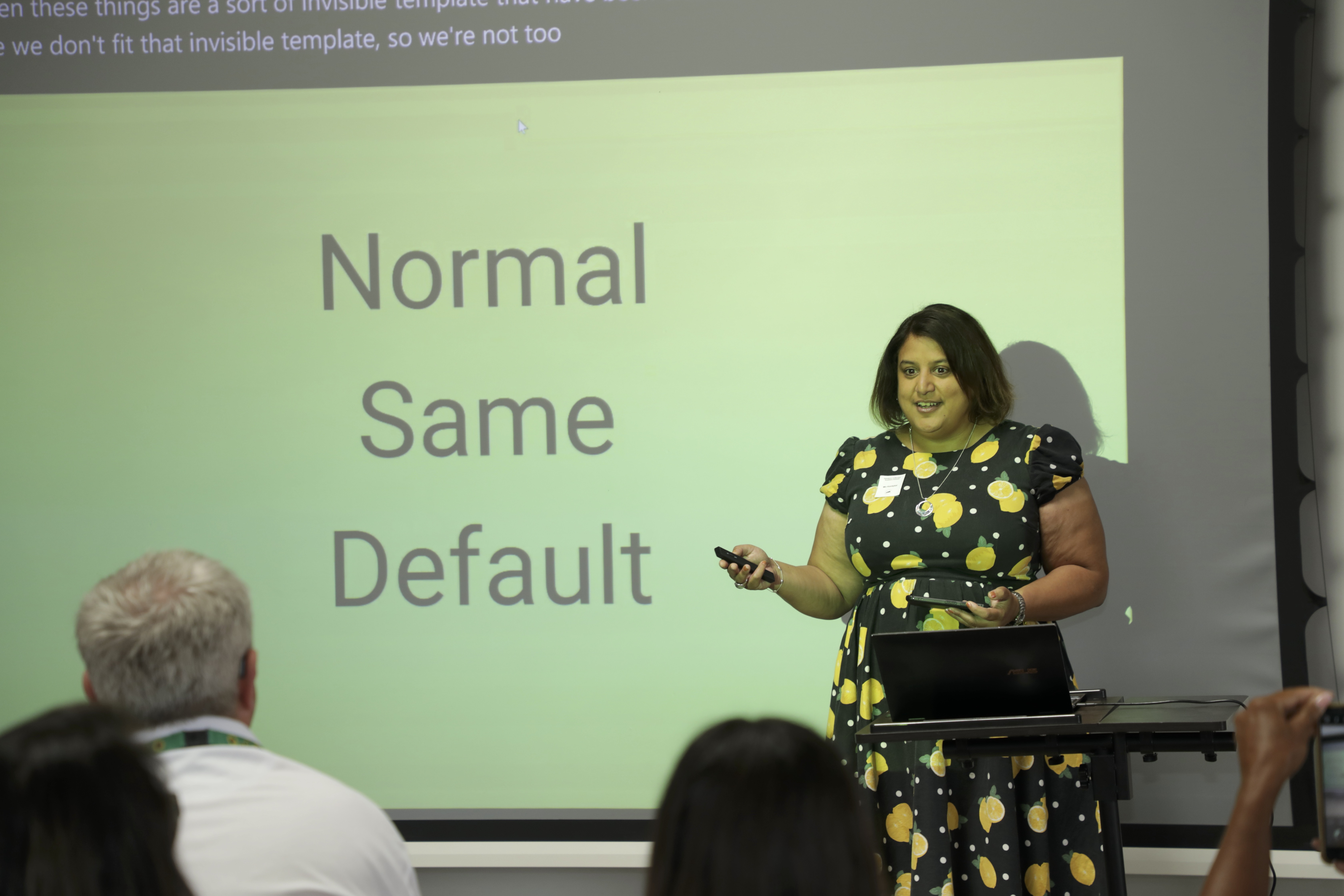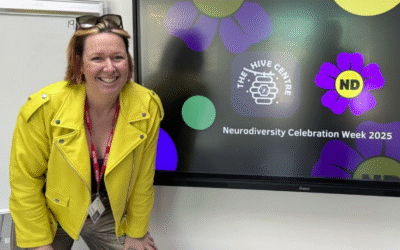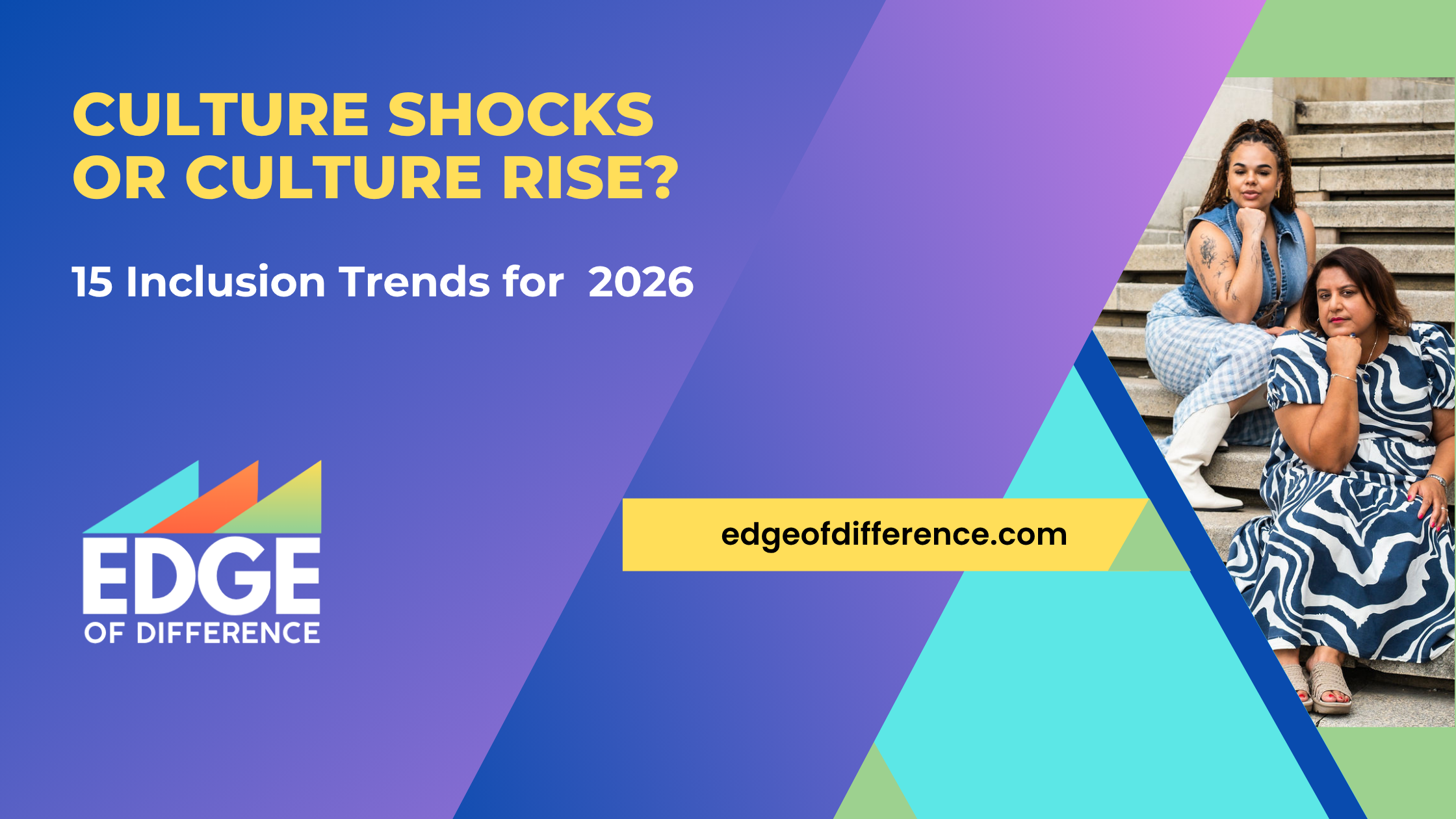When companies think about inclusion, it often begins at the centre. They start with policies, handbooks, and legal updates. When actual transformation rarely begins at the centre, it begins at the edges. It’s the people who have been overlooked, unheard, and undervalued hold the insights that drive genuine progress.
1. Missing from the centre
It’s the people who spot the subtle flaws in products that miss sections of the population. If you’re at the edges, you see what’s missing from products, processes and culture. People who regularly navigate exclusion, bring a unique lens.
In UK technology companies, only 29% of the workforce are women or non-binary, despite being around half of the population. Those from ethnic minorities are 25% of employees in tech companies. Less than 1 in 10 are from lower socio-economic backgrounds, compared to 39% across the UK. Those who are not represented are all people who use technology, or could if it was accessible. Those who are missed out, would add so much to product design teams. So that’s a systemic failure to include those voices.
The gaming industry is similar. The UK Games Census revealed that only 28% of the workforce are women or non-binary, 10% from minority ethnic backgrounds, and just 3% are neurodivergent. Senior leadership roles are where we see the lack of diversity the most.
These numbers reflect industries at the leading edge of technology, who are not including everyone. Which means they are missing fresh perspectives, stronger design and fairer ways of working. These are not just numbers, they represent lost ideas, talent and thinking that could drive innovation and company cultures.
2. Power Needs To Shift
Companies love to fun focus groups or listening circles. Without action and shifts in power, these things do not drive change. Diversity, equity and inclusion work has to really consider equity and where power sits and where decisions get made.
In gaming, who is making the decisions about things like menu design? There could be people who are missed out from these decisions who would add valuable insights. Involving people in these decisions will make better products for everyone.
3. Inequality Costs Innovation
This is not just a moral issue. This is about recruitment, retention, and business.
- Women in tech earn around £3,000 less than their male colleagues
- 61% of men are offered higher salaries for the same role
- 38% of minority ethnic employees report facing discrimination at work
- Only 3% of neurodivergent employees disclose it for fear of not being taken seriously.
This is not about people not applying for roles or promotions. There is a power issue here. When people leave roles because they feel excluded, they take with them their ideas, perspectives and potential.
There are so many research studies, books and talks about how diverse teams perform better. Try reading The Inclusion Journey to find out more. Games with more representation have been shown to make more money. Inclusive products grow your market share. Programmes like Code First Girls are proving what can be done.They are training around 50,000 women a year. Are those people being recruited and retained through?
4. Code Culture Add, Not Culture Fit
When people talk about ‘Culture Fit’ do they just mean more of the same people? To drive inclusion, it’s about thinking about recruiting people who will add to your culture. Who brings something different from their life or perspectives? Who will ask questions and help everyone think in different ways? For this to work, it has to feel safe to question things. Think about how you create that culture.
We need to shift to ‘culture add’. Who brings something different? Who will have different experiences and perspectives? Consider how you include people when they join you.
- Listen to different ideas
- Create space for ideas from the edges
- Link diversity, equity, and inclusion goals with leadership goals
Inclusion does not trickle down from the top. Go to the edges and listen to different voices. This is where you will find the different ideas.
5. Changes From The Edges
Inclusion does not trickle down from the top. Go to the edges and listen to different voices. This is where you will find the different ideas. Who will flag that there is a bias in your algorithm? Is there someone who might spot an issue with your UX that you have not thought about? There is likely to be people at the edges who can already see why your game will not appeal to your audience.
This is not about ticking boxes. If you want to work on what’s next, shift who leads the conversation.
For more news, ideas and tips from the edges, subscribe to our email newsletter, From The Edges.




